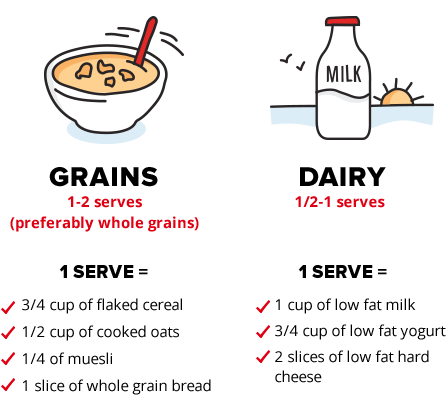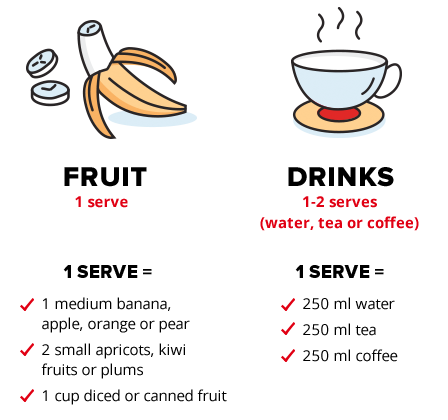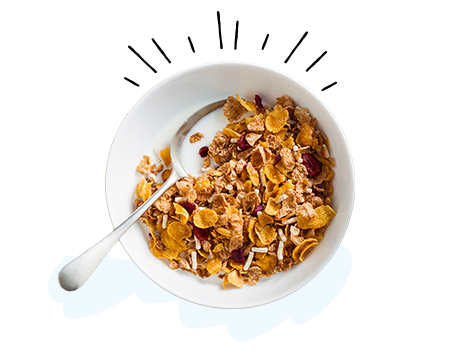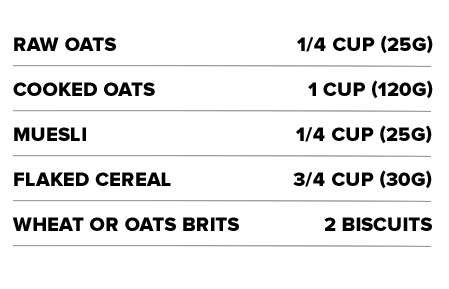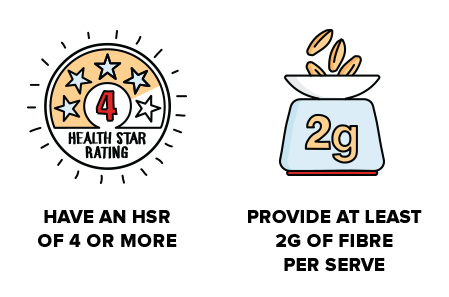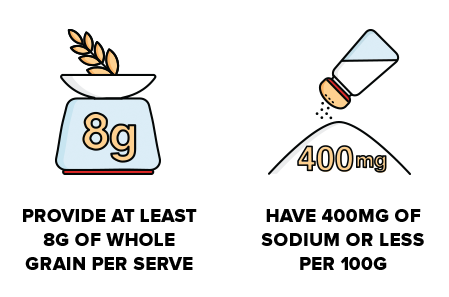The power of a healthy breakfast
A better day begins with brekkie
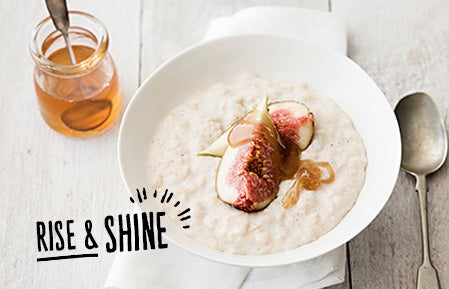
When you first wake up in the morning, your body’s running on empty. As you slept it was busily using nutrients to repair damaged tissue, fuel growth and keep your biological processes running. When you wake up, eating breakfast kickstarts your metabolism and helps replenish your body’s reserves.
Nutritionists recommended that breakfast should provide around 20% of your daily energy(1), and contribute significantly to your daily nutrient intake. For example, kids get up to a quarter of their daily calcium from breakfast(2). And studies show that if you don’t get the right nutrients early, it’s hard to make up for it as the day goes on(3).
Striking the right balance at breakfast
To get your day started right, you need a mix of nutrients – carbohydrates, protein, fats and fibre, plus vitamins and minerals. It sounds like a lot, but it’s surprisingly easy to get the balance right. Just eat something from each of these groups and you’ll get everything you need*.
*Adjust the number of serves according to the nutrition needs of you and your family. Serving sizes are based
Easy ways to get a balanced breakfast
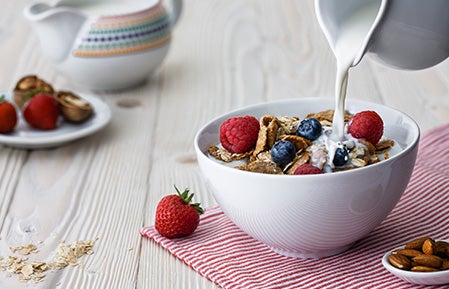
- Wholegrain flake cereal with reduced fat milk and berries
- Hot oats with reduced fat milk, diced apple and brown sugar
- Untoasted muesli with reduced fat yoghurt and stewed fruit
- Quick porridge with skim milk, stewed rhubarb and cinnamon
- Granola with yoghurt and chopped banana or peach slices
For more information on the Australian Dietary Guidelines, visit www.eatforhealth.gov.au
Starting the day with cereal
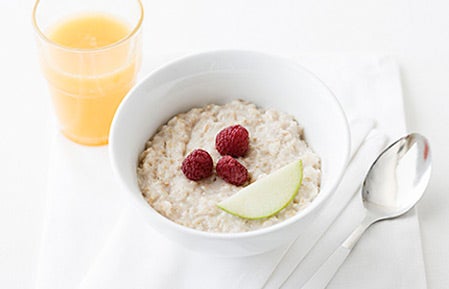
Uncle Tobys ready-to-eat cereals give you nutrients you need throughout the day, like carbohydrates, vitamins, minerals and fibre. Plus we also fortify some of them with vitamins and minerals like vitamins B1, B2, B3, D, folate, iron and calcium to restore any nutrients that might be lost during the grain milling process.
Just pour yourself a bowl of cereal with a splash of low fat milk, and add a bit of fruit, nuts or seeds if you like, and you’ll have the fuel your body needs for an active and energetic start to the day.
Four things to look for in a breakfast cereal
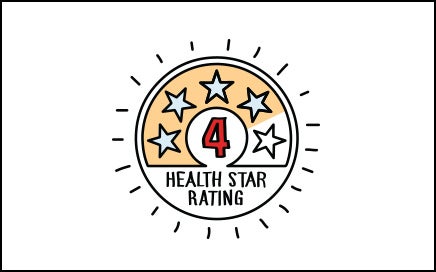
1. Aim for an HSR of 4 or more
Check the front of the breakfast cereal’s package for the Health Star Rating (HSR). The higher the number, the healthier the cereal. Learn more about HSR system here.
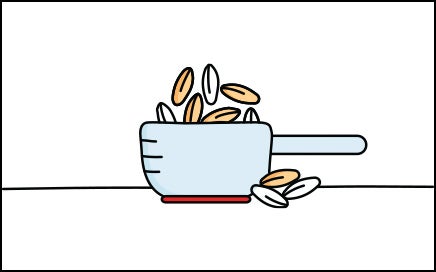
2. Find out how much fibre it has
Fibre keeps your digestive system healthy and helps you stay regular, so choose a cereal with at least 2g per serve. Find out more about fibre here.
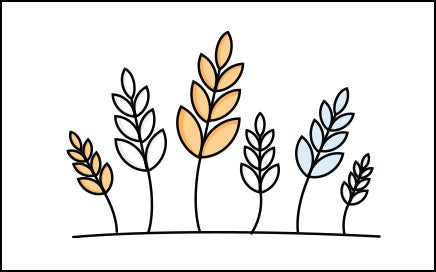
3. Go for wholegrains
Check the ingredients list for the word “whole” before any grain, like “whole meal”, “whole wheat”, “whole oats” etc. Ingredients are listed in order, so the closer a wholegrain is to the start the more of it there is. Adults should aim to eat 48g of wholegrain every day, according to the Grains and Legumes Nutrition Council. Learn more about wholegrains.
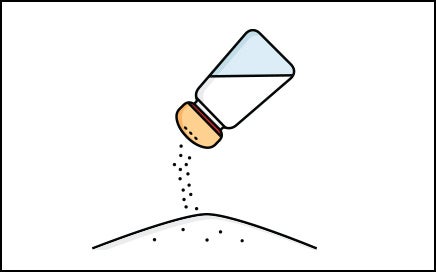
4. Keep an eye on salt content
Have a look at the nutrition information panel on the package and see how much salt (sodium) is in the breakfast cereal. Aim for cereals with no more than 400mg of sodium per 100g.
How much cereal makes up a serve?
Every cereal is a different size and shape, so the amount that counts as a serve varies. This chart gives you a guide, but you may need more than one serve depending on your energy requirements.
Sugar and breakfast cereals
Many people think sugar in cereal is just there as a sweetener, but there’s more to it. Sugar also adds crunch, structure, texture and colour, and stops cereal from going soggy after you’ve added milk.
The sugars in our breakfast cereals come from a variety of ingredients, including:
- Cane sugar
- Raw Sugar
- Honey glucose
- Dried fruits
- Fruit purees
- Sugar syrups
- Golden syrup
How much of the sugar in our diet comes from breakfast cereals?
According to the latest National Nutrition Survey (2011-12), only 3.4% of the total sugar intake of Australians two years and older comes from breakfast cereal(1). More recent analysis shows that breakfast cereal contributed 4g (1 level teaspoon) or less of added sugars a day in the diets of adults and children who ate them(2).
For individuals, it will depend on the cereal you choose and how much of it you eat.
How much sugar is in Uncle Tobys breakfast cereals?
We have a wide range of cereals, with sugar contents per 100g between 0g and 27g. On average, our cereals contain 16.5g* total sugar per 100g, which is about 5g (1-2 teaspoons) of sugar per 30g serve. In some of our cereals, part of this sugar comes from the dried fruit we add.
We understand that some people are trying to reduce the sugar they eat, and we're taking steps to reduce sugar in our cereals.
* As of December 2017
The Uncle Tobys breakfast cereal guarantee
Many of them are already there, but our aim is to make sure that 100% of our breakfast cereals:
Sources:
1. Australian Bureau Of Statistics: Australian Health Survey: First Results, 2011-12. ABS Cat No. 4364.0.55.001. Canberra: Australian Bureau of Statistics; 2014
2. Nutrition Research Australia. Breakfast Choice and its impact on added and free sugars intake: A secondary analysis of the 2011-2012 National Nutrition and Physical Activity Survey. Sydney, December 2016.
References:
1. Marangoni F, Andrea Poli et al. (2009) A consensus document on the role of breakfast in the attainment and maintenance of health and wellness. ACTA BIOMED; 80: 166-171
2. O’Neil CE, Byrd-Bredbenner C, Hayes D et al (2014) The role of breakfast in health: definition and criteria for a quality breakfast. J Acad Nutr Diet. Dec;114(12 Suppl):S8-S26
3. Cho S, Dietrich M, Brown CJ et al (2003) The effect of breakfast type on total daily energy intake and body mass index: results from the Third National Health and Nutrition Examination Survey (NHANES III). J Am Coll Nutr. Aug;22(4):296-302. • Serra Majem L et al (2004) Nutricion infanil y juvenile. Estudio enKid. Elsevier Espana: Volume 5. • Rampersaud GC, Pereira MA,




